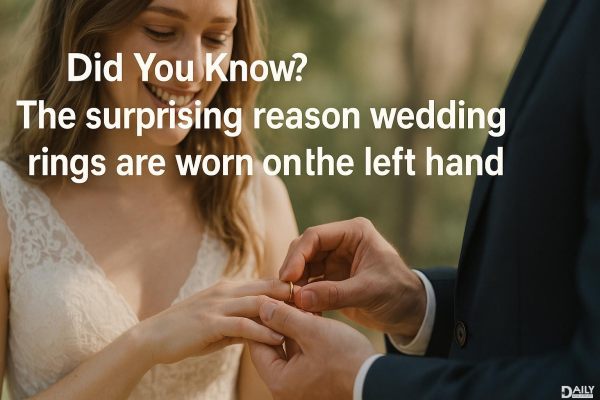Ever wondered why wedding rings are traditionally worn on the left hand? It all comes down to an ancient belief that the "vena amoris" or "vein of love" runs directly from the left ring finger to the heart. While modern science has debunked this anatomical myth, the romantic symbolism stuck—and now, slipping a ring on that finger is a universal sign of "I do." But there’s way more to this story than just old-school romance. From cultural quirks to practical reasons, the history of ring placement is a wild ride through time.

Back in the day, the Egyptians and Romans were big on symbolism—especially when it came to matters of the heart. They believed the fourth finger on the left hand had a direct line to the heart via the vena amoris. (Spoiler: Nope, that’s not a real vein.) But hey, it sounded poetic, so the tradition took off. Even early physicians like Galen doubled down on the idea, making it medical gospel for centuries. Fast-forward to today, and we’re still following this sweet, if scientifically shaky, tradition.
Not everyone follows the left-hand rule. In countries like Germany, Russia, and India, wedding rings often go on the right hand—sometimes for religious reasons, other times just 'cause that’s how their culture rolls. Orthodox Christians, for example, associate the right hand with strength and virtue. Meanwhile, in Spain, couples might switch the ring to the left after the ceremony. It’s a reminder that love isn’t one-size-fits-all—even when it comes to jewelry placement.
Beyond symbolism, there’s a legit practical reason the left hand won out for wedding rings: most people are right-handed. Wearing a ring on the non-dominant hand means less wear and tear—fewer scratches, dings, and accidental dips in salsa. (Trust us, no one wants a taco-seasoned diamond.) Plus, back when manual labor was the norm, keeping a precious metal ring away from heavy tools was just common sense.
Here’s where things get tricky. In the U.S., engagement rings and wedding bands usually share the left ring finger—stacked like tiny, shiny pancakes. But in some European countries, the engagement ring hops to the right hand after marriage. Then there’s the question of which ring goes on first during the ceremony. (Pro tip: The wedding band typically slides on closest to the heart, with the engagement ring following. Cue the "awws.")
Newsflash: There are no ring police. Some lefties prefer their right hand for comfort. Widows or divorcees might move their ring as a personal choice. And in LGBTQ+ communities, couples often rewrite traditions to fit their love story. The real magic isn’t in which finger you choose—it’s in the commitment behind the ring. So whether you’re team left, right, or even thumb (hey, no judgment), wear it your way.
At the end of the day, the "correct" finger is whatever feels right to you. The tradition’s roots might be a mix of myth and practicality, but the sentiment? That’s 100% real. So next time you glance at a wedding ring, remember: it’s not just jewelry. It’s a centuries-old conversation between history, culture, and the wild, wonderful ways we say "forever."
























